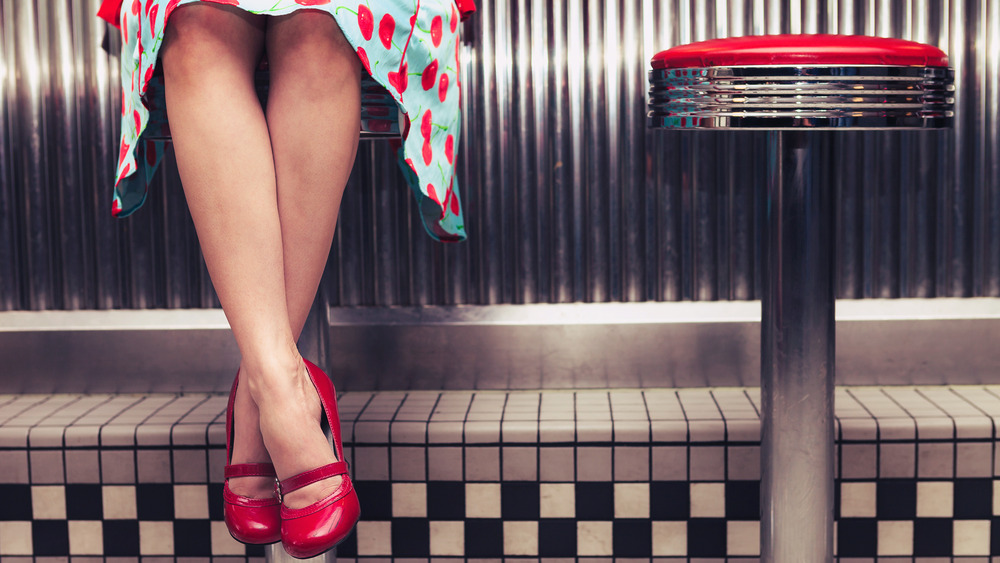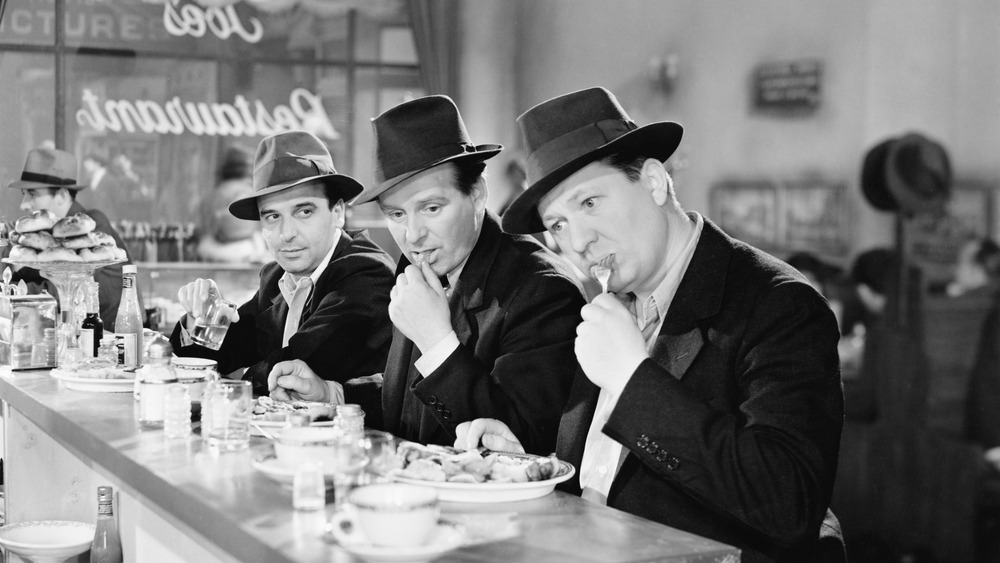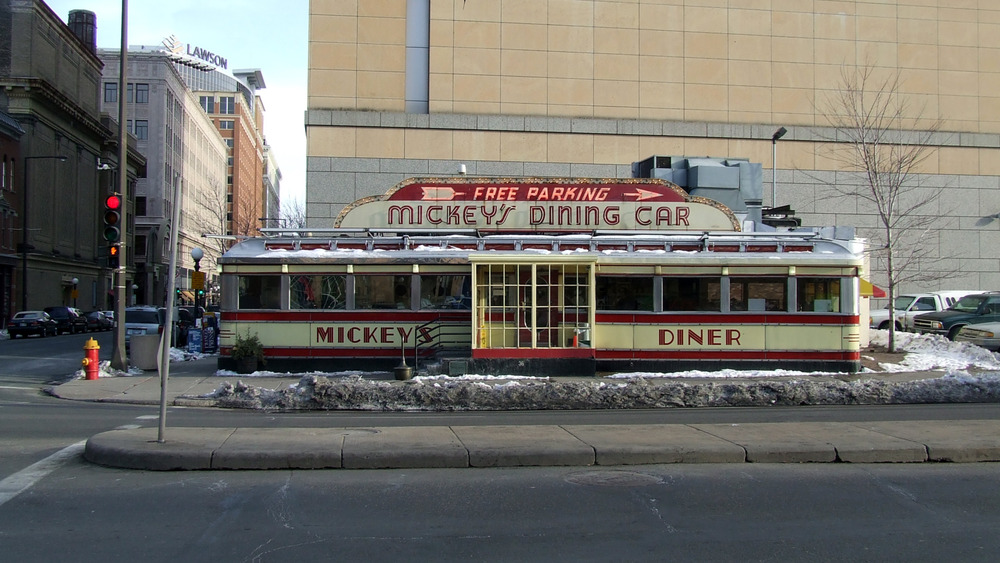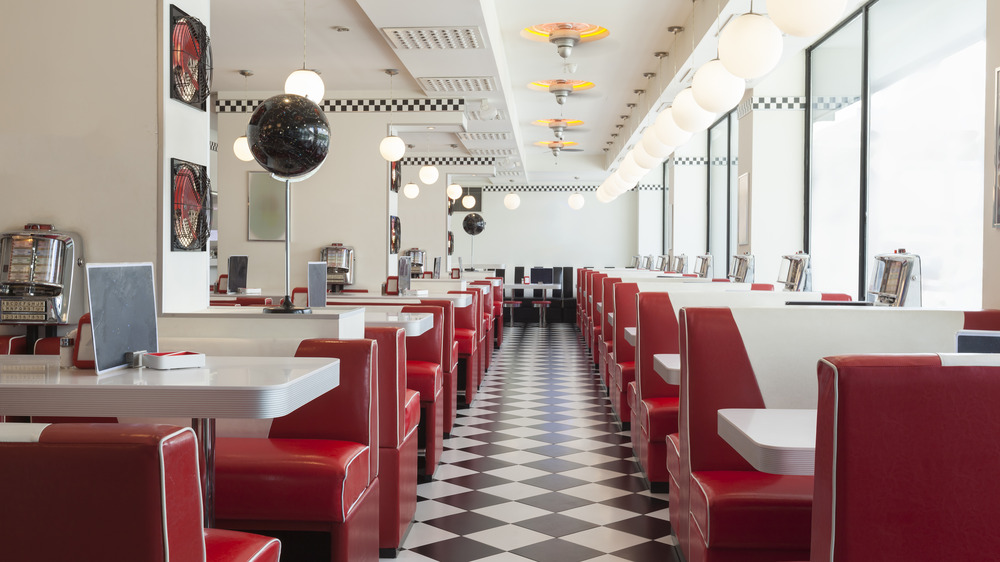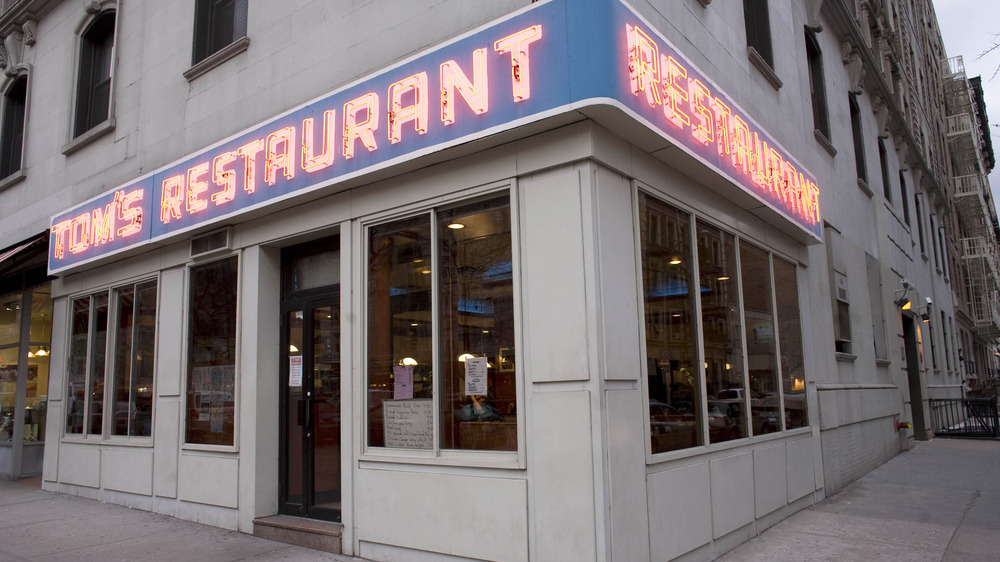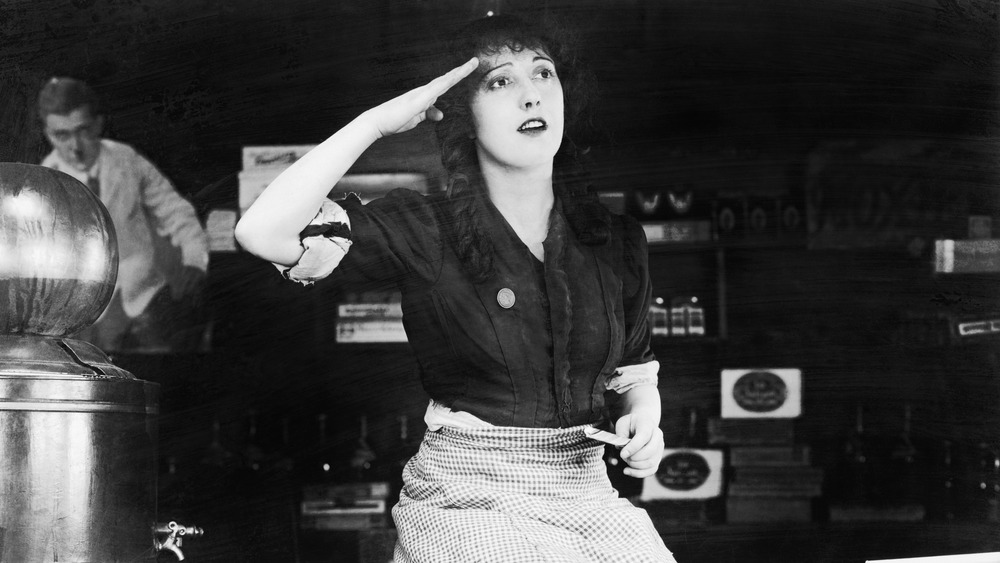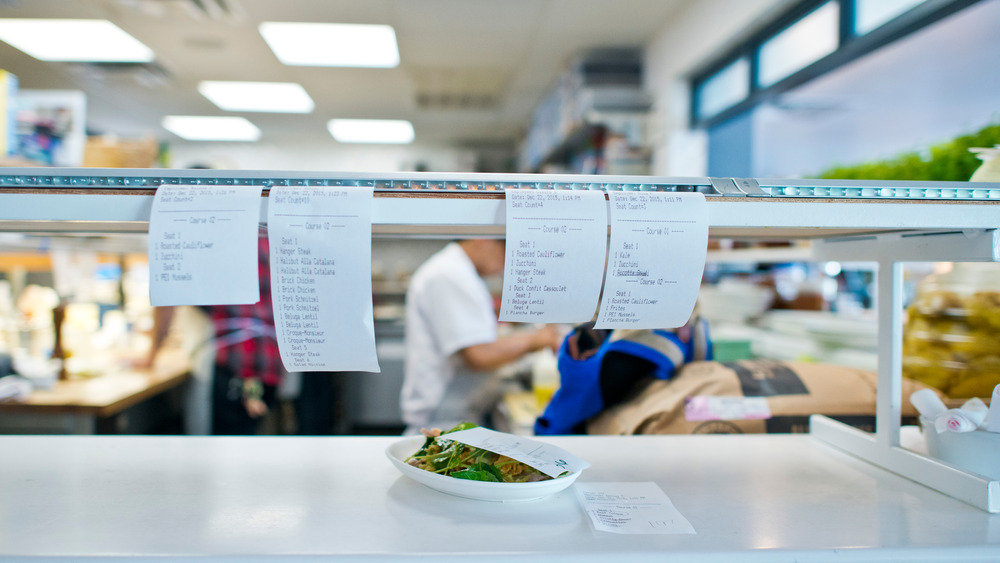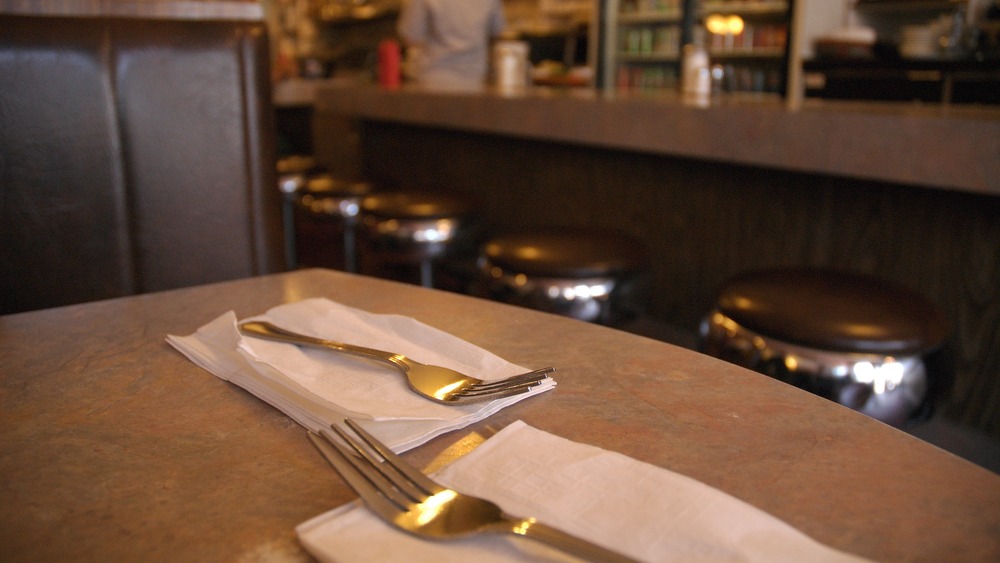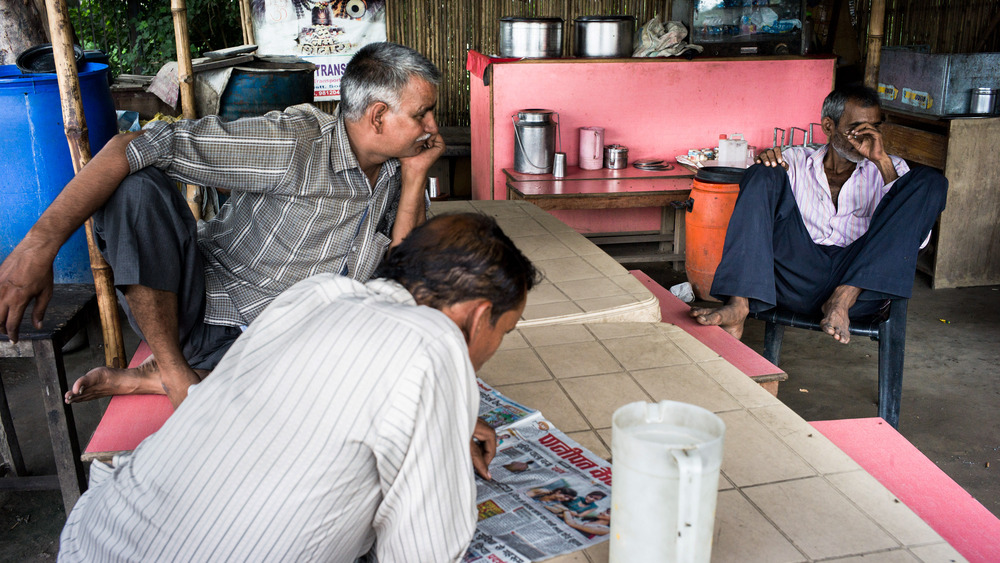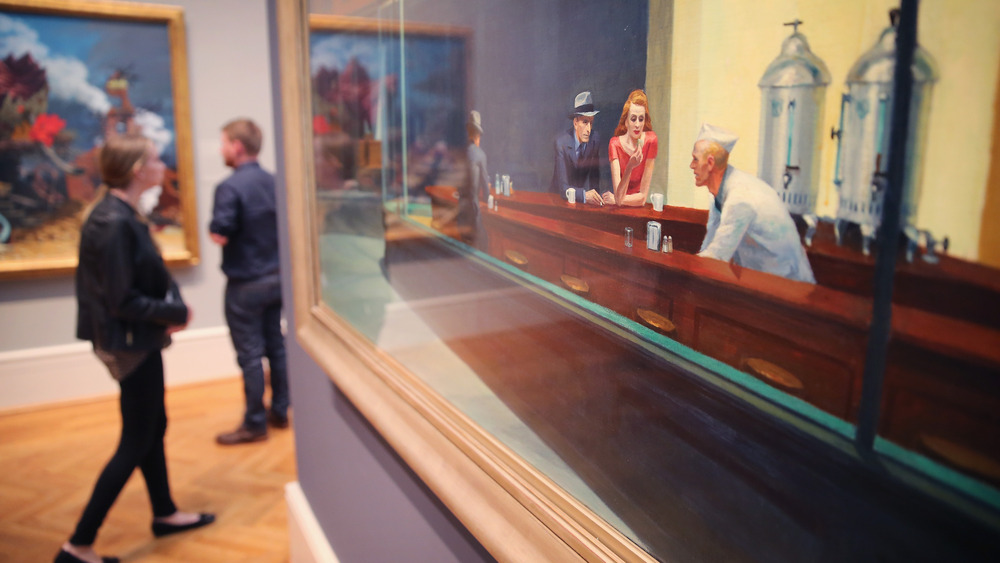The Truth About Diners
Many Americans would likely agree that there's nothing quite like the classic diner. After all, how could Guy Fieri's Food Network hit "Diners, Drive-Ins and Dives" have gotten so popular if a significant number of us aren't feeling at least a little nostalgic for diners in the first place? Who doesn't love being served cheap, delicious food day or night inside of one of these cultural icons? Who doesn't instantly recognize the style, look, and feel of this type of restaurant when it shows up in TV, movies, books, and paintings? Who doesn't feel the essence of a cozy diner settle into their very being?
Yet, diner's aren't a vanished relic of the past. Far from being lost to time, the diner lives on as the everyman's place to be and, of course, to eat a plate of home fries or a classic burger. It's also a testament to restaurant ingenuity, with a history that goes back farther than you might think (hint: it's not an invention of the 1950s). Order up! Here's everything you wanted to know about diners, the American culinary classic.
Diners began as 19th century lunch carts
The sleek, retro American diner as we know it may make us think of the 1950s first. But that's an evolved version of its predecessor, the horse-drawn lunch cart — and that's all thanks to a man named Walter Scott. Born in 1841, Scott was selling food off of carts around Providence, Rhode Island as a child, says the Rhode Island Heritage Hall of Fame. By 1858, at the age of seventeen, Scott had upgraded his business to sell sandwiches and coffee to late-night patrons of men's clubs and to night workers. Scott made his mark by making his business mobile and selling food on nightly runs from the back of his wagon, like an early food truck entrepreneur.
A Worcester, Massachusetts man named T.H. Buckley cashed in on the idea in 1887, starting the first company to build more complex cars with dedicated cooking equipment, as Paste reports. Eventually, Buckley found that building diners was a more profitable venture than running one, so Buckley's Worcester Lunch Car Company was followed by a plethora of other entrepreneurs' "lunch wagons", which later on went by the term "night lunch wagons," to be patented in 1893 by Charles Palmer. The first stationary diner only appeared in 1913.
As for the modern appearance of classic diners today? It was only until World War II had ended that diners took on those stainless steel boxes with Formica countertops, leather booths, black and white terrazzo floors, and large windows.
There's a reason classic diners look like trailers
The main reason the stationary dining cars we know today have a rail carriage-like appearance is that, according to The Telegraph, early diners once really were train cars that were converted into standing restaurants. Today's diners owe a lot to the Irish-American inventor Patrick Tierney — known to have come up with the "diner" word in the first place — who built hybrids of trains' dining carriages and early lunch wagons and shipped them to buyers.
The mobility of those prefabricated diners made them exceedingly easy to move, but also to maintain as well: If the proud owners of new diners detected any issues with their business, they could ask for fixes and upgrades directly from the manufacturer, according to Curbed. There are still diner manufacturers today building classic diner-style restaurant units, but the cost can get pretty prohibitive, even for restaurants that enjoy the benefits of rich backers. Newly-made diners can cost more than $1 million. Meanwhile, retrofitting and repairing older models using sometimes outdated parts can also add up pretty quickly, meaning you should really cherish the next diner you come across for its unique look as well as its food.
New Jersey is the diner capital of the world
There's no official count in the United States recorded just how many diners there are in the country, but it appears the state of New Jersey has the most. That makes it the best candidate for diner capital of the world. The state sported more than 600 of them in 2015, though that number may have changed with restaurants closures sweeping the nation due to the COVID-19 pandemic.
All of this is due to New Jersey's road network and geographical position. In a 2015 interview with Bon Appétit, historian Mark Nonestied explained that New Jersey "had a very early, highly developed transportation system. When people drove, they needed to stop and eat ... Diners filled that need." In addition, diners offered readily accessible and affordable food, no matter the time of day, making them perfect for the Garden State's diverse and growing working class.
According to Nonestied, New Jersey is also the United States capital of diner manufacturing, creating stationary diner cars that are then exported all over the nation and even the world. In the 1950s alone, America had more than 6,000 New Jersey-built diners scattered throughout the northeast states with only around 2,000 remaining in 2019, a small number of which are protected with spots on the U.S. National Register of Historic Places, per Food Network.
Greek immigration had a big influence on American diners
Among the communities that have taken up spatulas and poured coffee at diners, diner ownership in the United States is dominated by Greek families, The Kitchn reports. It's a tradition that's the result of immigration from Greece spanning from the late 1800s to diners' peak activity in the 1950s. Because of racist attitudes at the time, there weren't many opportunities waiting for Greek families when they arrived, so many turned to kitchen work. Over time, those employees worked their way up to restaurant ownership, culminating in a swath of Greek diner owners.
Evidence for that is found in all kinds of cultural examples, as the Chicago Tribune reports, ranging from a "Saturday Night Live" sketch where actors played Greek characters in the fictional Olympia Café to the actual New York diner Tom's Restaurant. The latter has been in the hands of the same Greek American family since the 1940s and is featured in the Suzanne Vega song, "Tom's Diner," as well as a few episodes of "Seinfeld."
In some ways, the diner was a no-brainer for early immigrant Greek entrepreneurship. According to The New York Times, the 350,000 Greek immigrants who came to American between 1900 and 1920 brought the concept of traditional male-dominated Greek cafes called kaffenion. "Many worked their first American jobs in a kaffenion — or found jobs while drinking in one," explains the Times, which then led to a plethora of Greek immigrants establishing themselves as restaurant owners.
Women didn't eat or work in diners until the 1920s
According to "Counter Culture: The American Coffee Shop Waitress," career waitresses are so engrained in the culture of diners that it's hard to imagine one without women. "They are part psychiatrist, part grandmother, part friend, and they serve every walk of American life," the book argues. "The classic diner waitress is an icon of American culture."
However, women have historically been often denied service at restaurants, especially if they arrived on their own, says the Oxford University Press. Often sexually segregated, women were often seated in separate ladies' dining rooms. It was only after World War I broke out that women began to work and eat in diners, let alone any restaurant. The opening of so many different kinds of middle-class restaurants and the beginning of Prohibition — which meant, for many, less alcohol, loosened morals, and male patrons with female escorts — changed the restaurant scene completely. Soon after, male workers were eating and working alongside women.
American diners have their own language
Specialized language, often known as jargon, is everywhere. As Anthony Bourdain wrote in "Kitchen Confidential," "Every trade has one." While Bourdain's book introduced readers to many terms like "86" (to cancel an order) or "mise" for mise en place, a chef's prep work, his kitchen chefs' language doesn't quite hold a candle to that used in diners. Workers there arguably have a far more expansive and striking vocabulary than chefs in other restaurants.
According to the "Lexicon of Real American Food," "Diners have a language all their own: weird names for ordinary foods. The slang was created not so much for efficiency — often the slang term is longer than what it really means — but for fun." Things can get pretty colorful and complicated, Connecticut Magazine says, with turns of phrase that range from calling two scrambled eggs on toast "Adam & Eve on a raft and wreck 'em", right down to calling a sausage a "zeppelin".
Unfortunately for aficionados of diner talk, much of this lingo is fading because of the growing prevalence of fast food joints and other places with standardized, even franchised terms of phrase. If you're lucky enough to be served by a diner veteran, however, you have a chance of still hearing these phrases and words issuing forth from the diner kitchen.
The term 'greasy spoon' isn't American diner lingo
If you know diners, then you probably know that nearly everyone refers to diners with the term "greasy spoon." It's understandable to think that an unclean diner serving not-so-palatable dishes and falsely-advertised beverages would be the reason why the term exists. Consider also how tough it is to wash the grease off plates and cutlery in a style of restaurant known for platters of hamburgers and fries. Yet, the history of this term is surprisingly complicated. "Greasy spoon" goes back farther than a dirty-aproned short-ordered cook in a 1950s diner. According to the Online Etymology Dictionary, the term dates back to 1906 and was meant to include dirty boarding houses as much as it did small and cheap restaurants.
That's not the end of it, however. Nicknaming restaurants after unwashed cutlery dates back to at least 1849 when author Samuel Bevan referred to a restaurant as "The Dirty Spoon" in "Sand and Canvas: A Narrative of Adventures in Egypt." Bevan refers to the restaurant in question with quite a few colorful phrases, calling it "a sort of vegetable shamble" and saying that even the table linens are a "doubtful white."
Different types of diners can be found around the world
If you look at the common qualities of many diners, you'll see that a diner is a style of restaurant that's far from unique to the United States. Many diners, regardless of location, can boast the inexpensive food and casual atmosphere that make them beloved amongst customers, as well as common layouts like long counters occupied by cooks with waitstaff and common locations on roadsides and busy neighborhoods. Hong Kong, for example, has its own diners that are known as cha chaan teng and which serve simple food on the cheap throughout the day, according to Discover Hong Kong. Meanwhile, roadside dhabas in India serve food to truckers, The Tribune reports, at times providing beds for them to rest after long drives.
At the same time, interpretations and copycat 'American' diners can also be found all over the world, reports Insider. These can range from places that act as safe havens for expats or tourists like the Parisian-based, American-run breakfast restaurant Breakfast in America or the Ireland-wide chain of American-inspired restaurants known as Eddie Rockets. Then there are ode-to-the-diner concepts like Betty's Midwest Kitchen in Selangor, Malaysia.
The diner is one of America's great cultural icons
There's no doubt that if someone truly wants to experience real Americana, they need to eat in a diner at one point or another. The formula for this kind of eatery has been repeated in every state and is so ubiquitous that they've become oases that Americans can step into for the chance to feel at home anywhere in their own diverse country. As director and curator of the Culinary Arts Museum Richard J. Gutman told Vice, each diner is a "piece of neutral American iconography that transcends [politics]." Then again, politics can just as easily come into play in any U.S. setting, much less one that's considered classically American. As the BBC points out, U.S. election campaigns would be empty indeed without a diner stop to show just how "normal" a candidate is to the public. That just a sign of how important diners are to the American psyche.
Today, while diners continue to be part of the fabric of the United States as restaurants, they also live on as an inspiration for American art and culture, from painter Edward Hopper's Nighthawks to modern shows like the animated favorite "Bob's Burgers." Diners have secured themselves a secure spot in the American imagination and, for now, its culinary landscape as well.
